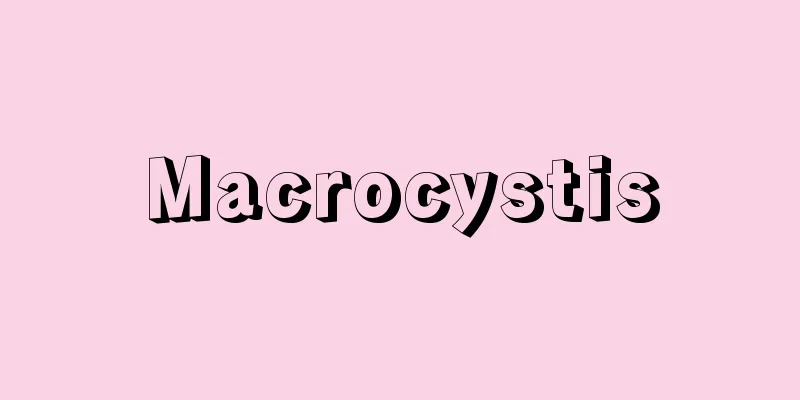Kiyoshi Shiga

|
Bacteriologist. Born the son of Sato Makoto, a samurai of the Sendai domain, his childhood name was Naokichi. In 1878 (Meiji 11), he entered the Shiga family, a domain physician, in his mother's family home, and changed his name to Kiyoshi. In December 1896, he graduated from the Faculty of Medicine at the Imperial University, and became a student of Kitasato Shibasaburo, director of the Institute of Infectious Diseases of the Greater Japan Private Hygiene Association. In December 1897, he published "First Report on the Research into the Pathogens of Dysentery," the first paper on the Shigella genus, and the following year, in 1898, he published a paper (in German) summarizing the main points, which became a staple in bacteriology textbooks around the world. In 1899, when the Institute for Infectious Diseases was transferred to the Ministry of Home Affairs, Kitasato became director, and Shiga became the first chief of the Ministry of Home Affairs' Institute for Infectious Diseases engineers. In 1901 (Meiji 34), he studied in Germany, and in the same year, the Shigella Investigation Committee, chaired by Koch, gave the bacterium the name "Shiga-krus bacillus." Currently, the scientific name for Shigella is Shigella dysenteriae , named after its discoverer, Shiga. In October 1901, Shiga studied under Ehrlich in Frankfurt am Main, and thereafter studied biochemistry, immunology, and chemotherapy. In a study of pigments that kill African sleeping sickness Trypanosoma brucei in mice, he finally demonstrated the therapeutic effect of a red benzidine pigment, which he named Trypanrot, and published in a paper co-authored with Ehrlich (1904). This was the beginning of chemotherapy. In 1905, he returned to Japan, received his medical doctorate, and in 1912 (Taisho 1), he traveled to Europe again to study under Ehrlich. After returning to Japan, he continued to work at the Institute for Infectious Diseases, but resigned from his position along with Director Kitasato when the Institute was transferred to the Ministry of Education, and in 1914, he became the fourth director of the Kitasato Institute when it was founded. In 1920, he became a professor at Keio University School of Medicine, but in the same year he was appointed director of the Hospital of the Government-General of Korea and principal of Keijo Medical College, and thereafter served as professor at Keijo Imperial University, dean of the School of Medicine, and president of the university, before retiring in 1931 (Showa 6) and returning to Tokyo. In 1936, he was appointed Kinkei no Mashiko (an imperially appointed official), and in 1944 he was awarded the Order of Culture, and in 1948 (Showa 23), he became a member of the Japan Academy. He also received honors such as an honorary member of the Royal Society of Tropical Medicine in the UK, a supporting member of the Pasteur Institute, a special member of the German Academy of Natural Sciences, and an honorary doctorate from Harvard University, and was appointed an honorary citizen of his hometown, Sendai City. His books include "Bacteriology and Immunology" (1923), "Kyosui-so Kanwa" (1950), "Dialogue between an Old Scientist and His Son" (1953), and "Recollections of a Certain Bacteriologist" (1966). He was a close friend of Doi Bansui since their junior high school days, and when Shiga was elected a member of the Academy of Sciences, Bansui sent him a colored paper with the words "Iris on the 3rd, Iris on the 10th, Why is it only now that you've chosen me as a weak eggplant?" to congratulate him. [Tsunezaburo Fujino] [References] | | | | | |©Shogakukan Library "> Kiyoshi Shiga Source: Shogakukan Encyclopedia Nipponica About Encyclopedia Nipponica Information | Legend |
|
細菌学者。仙台藩士佐藤信の子として生まれ、幼名は直吉。1878年(明治11)母の生家で藩医の志賀家に入り、潔と改名。1896年12月帝国大学医科大学を卒業、大日本私立衛生会の伝染病研究所、北里柴三郎(きたさとしばさぶろう)所長の門に入った。1897年12月「赤痢病原研究報告第一」を発表、これが赤痢菌属に関する最初の論文であり、翌1898年、その要点をまとめた論文(ドイツ語)を発表、世界の細菌学専門書はこれを掲げた。1899年、伝染病研究所の内務省移管により、北里は所長に、志賀は内務省技師伝染病研究所第一部長となった。1901年(明治34)ドイツに留学、同年、コッホが委員長を務めた赤痢菌調査委員会は、赤痢菌を一名「志賀‐クルーゼ菌」と命名した。なお現在、赤痢菌の学名は発見者志賀にちなんでShigella dysenteriaeという。 1901年10月、志賀はフランクフルト・アム・マインのエールリヒに師事、以後、生物化学、免疫学、化学療法を研究した。そしてマウス体内のアフリカ睡眠病トリパノソーマを殺滅する色素類の研究で、ついにベンチジン系赤色色素の治療効果を証明、これをトリパンロートと命名し、エールリヒとの共著論文で発表した(1904)。化学療法はここから始まる。1905年帰国、医学博士の学位を受け、1912年(大正1)ふたたびヨーロッパに渡りエールリヒの下で研究、帰国後も伝染病研究所で活動したが、伝染病研究所の文部省移管に際して北里所長と行動をともにして辞職し、1914年北里研究所創立とともに第四部長となった。1920年慶応義塾大学医学部教授となったが、同年、朝鮮総督府医院長・京城医学専門学校校長兼任となり、以後、京城帝国大学教授、同医学部長、同総長を歴任し、1931年(昭和6)退任、東京に戻った。1936年錦鶏之間祗候(きんけいのましこう)(勅任官待遇)となり、1944年文化勲章受章、1948年(昭和23)日本学士院会員となった。ほかにイギリス王立熱帯病学会名誉会員、パスツール研究所賛助会員、ドイツ学士院自然科学会特別会員、ハーバード大学名誉博士号などの栄誉を受け、郷里仙台市の名誉市民に推された。著書には『細菌学及免疫学』(1923)、『貴洋翠荘閑話(きようすいそうかんわ)』(1950)、『ある老科学者とせがれとの対話』(1953)、『或(あ)る細菌学者の回想』(1966)などがある。なお、土井晩翠(つちいばんすい)とは中学生時代からの親友であり、志賀が学士院会員に選ばれたとき、晩翠は「三日のあやめ 十日のしょうぶ 何だ今頃(いまごろ)へぼなすび」の色紙を贈って祝福した。 [藤野恒三郎] [参照項目] | | | | | |©小学館ライブラリー"> 志賀潔 出典 小学館 日本大百科全書(ニッポニカ)日本大百科全書(ニッポニカ)について 情報 | 凡例 |
<<: Vision - Vision (English/French), Gesichtssinn (German)
>>: Shikakakugen - Four proverbs
Recommend
Nihonmatsuyama Kofun - Nihonmatsuyama Kofun
Located in Sakai, Yoshino, Matsuoka-cho, Yoshida-g...
Karachai people
...In this region, there are also ethnic groups s...
Acacia leucophloea (English name) Acacialeucophloea
…[Hiroshi Aramata]. … *Some of the terminology th...
After the blaze - Arabiake
...The first Buddhist ceremony was held at Asukad...
Agricultural land area
Based on the Agricultural Promotion Act, these are...
Andrzejewski
Polish novelist born in Warsaw. He wrote many work...
"Pictures and Countryside Words" - Egotohigen
…Nishikawa Sukenobu's "Painting and Colo...
Hirate Brewery - Hirate Miki
Year of death: 1844.9.18 (1844.9.18) Year of birth...
An'yoji Temple Jobutsuin
…Of course, this is just fiction, but it became w...
Camp, WC (English spelling) CampWC
…Unlike the traditional football style, in which ...
Mankiewicz, H.
…American film director, producer, and screenwrit...
Kobotoke Pass - Kobotoke Pass
This checkpoint was established in Komagino, Kamin...
A. - A.
...The discovery of X-rays by Roentgen in 1895 br...
Mount Myoko
It is the main peak of the Myoko volcanic group, ...
General power relations
The relationship of dominance and submission that...









